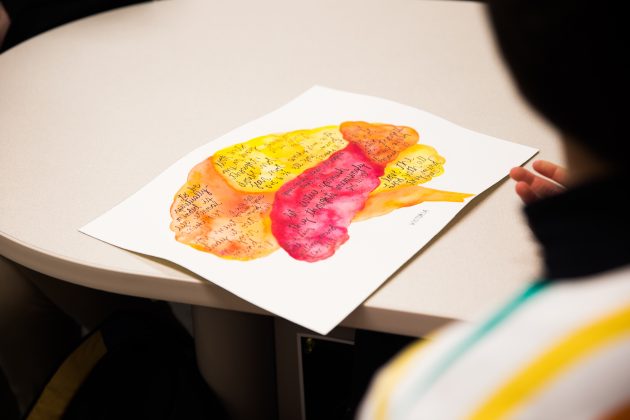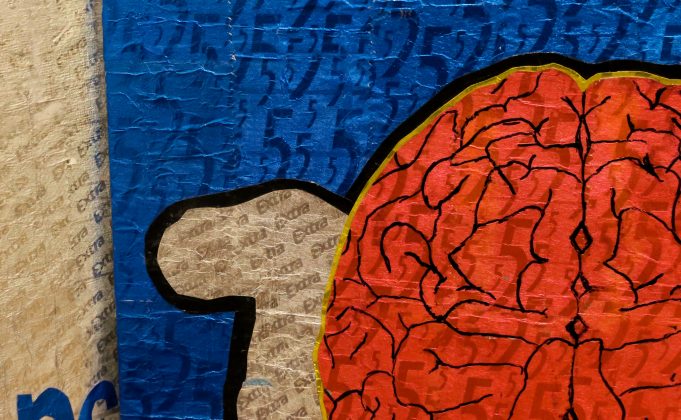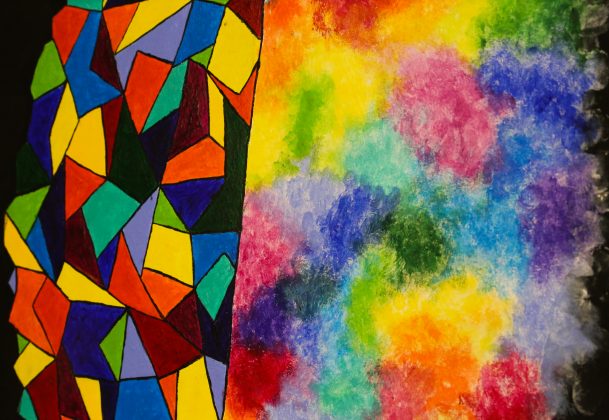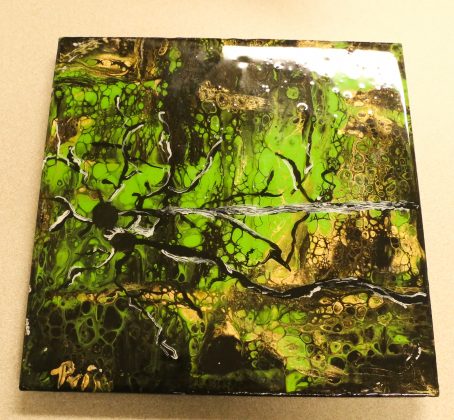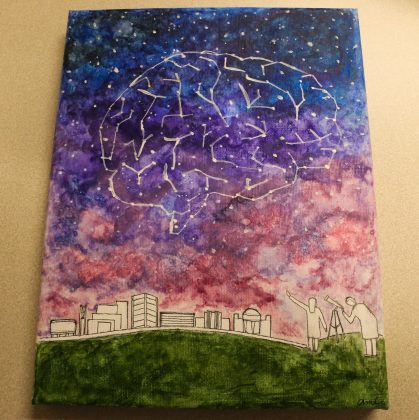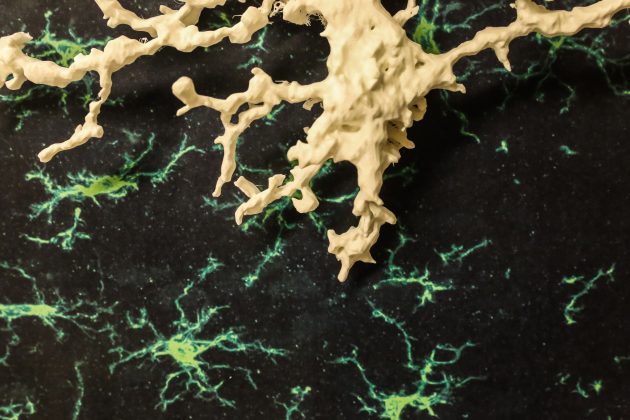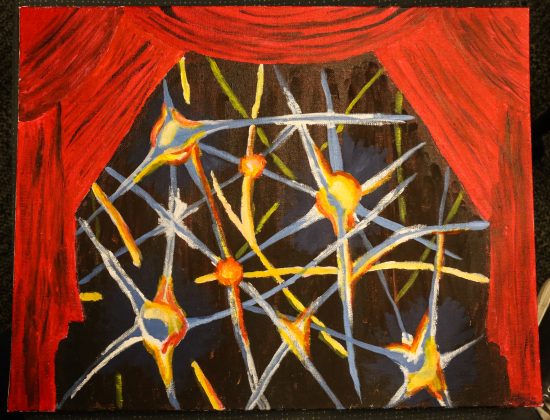BYU neuroscience students recently used their artistic abilities to express their views on their field while competing in a contest to decorate the center’s recently remodeled walls.
BYU Neuroscience Center Director Mona Hopkins said there have been many changes to the center recently, including moving the graduate programs to a different department and a subsequent remodel to the offices.
“We remodeled the offices to accommodate these changes, so once we got through with the remodel we were looking at these white walls,” Hopkins said. “I really wanted something that represented neuroscience on the walls.”
Professor Rebekka Matheson is a graduate of BYU’s Neuroscience Center. It was originally Matheson’s idea to hold the competition as she “dabbles in painting” herself.
Hopkins said she wanted to showcase what neuroscience is and the many beautiful images of the brain. She decided with Matheson that doing an art contest would capture the incredible talents of their students and fill up those white walls.
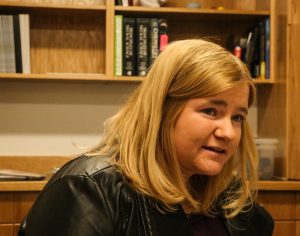
“For me there is a lot of overlap between artistic appreciation and what I’ve learned from my neuroscience studies,” Matheson said.
Matheson’s mother was an artist and a curator of a local art gallery for many years. Matheson realized there is a lot of artistic talent out there in the community while helping her mother at the gallery.
“I thought, with the neuroscience majors, it’s just a talented group of students,” Matheson said. “So many of them are artists or musicians or athletes — it’s just a great group of kids, so I knew we would get some good stuff.”
The contest entries demonstrate the broad capabilities of neuroscience students, according to Matheson. In total, 14 students entered the contest and the top five submissions were chosen as winners.
Both Matheson and Hopkins served as judges for the competition. Hopkins said she was completely amazed when the art started coming in. Each of the top five entries utilized different mediums, and many of the entries not only reflected aspects of neuroscience but also reflected BYU and the gospel.
“(Many entries) showcased that everything is spiritual,” Hopkins said. “It was just overwhelming to look at how amazing and creative the pieces that came in were.”
Matheson said judging was difficult due to the high quality of the entries. She said she could see the effort and the vision that went into each piece.
“There were pieces that had immediate visual impact right when you see them, but then when I looked closer at some pieces I thought, ‘Wow’ — when you look closer at these other pieces there’s a lot going on there,” Matheson said.
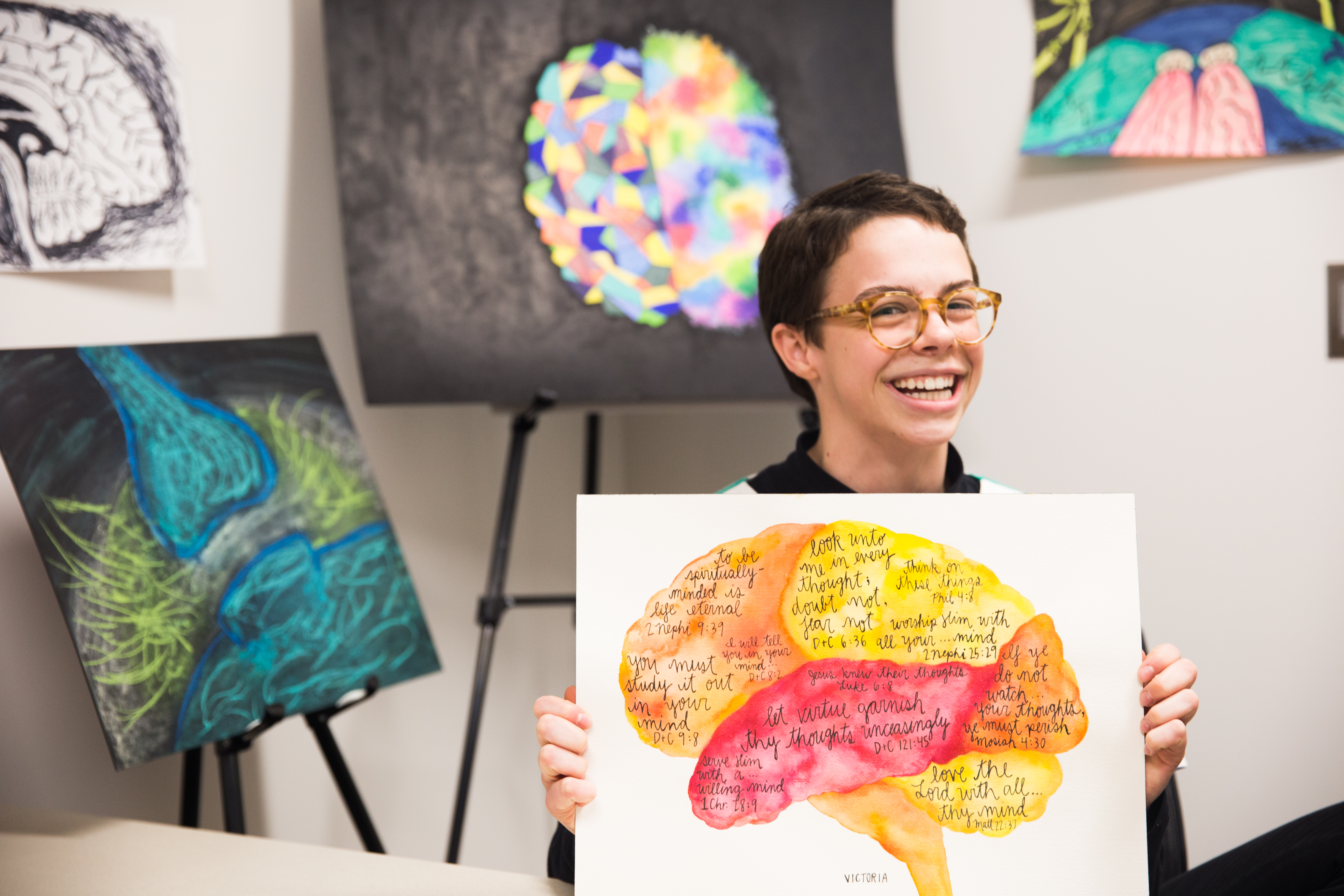
Neuroscience major Victoria Jacobsen placed first in the competition. She titled her entry “Think on These Things,” and used watercolor to paint the brain with scriptural references written on top.
“I do art just by myself, and I wanted to express my creativity,” Jacobsen said. “Neuroscience has kind of just inspired me a lot — learning it and being in the major, I thought this will be kind of a cool challenge to combine everything.”
Jacobsen’s art piece is very spiritually centered. She said she focused on spirituality because she feels the spirit strongly in her neuroscience classes.
“I feel like you gain a great appreciation for God and for your own divine being through learning the science of it all,” Jacobsen said.
She studied the scriptures to find verses about the mind, thoughts and memory to tie it to the brain. The scripture that served as the catalyst to her art piece was, “Look unto me in every thought; doubt not, fear not.”
“That scripture is kind of a big part of my own conversion process, so upon thinking about that scripture … a little light bulb went off in my brain,” Jacobsen said. “I think science and spirituality are definitely connected. They make up each other, and I wanted to create something that express that.”
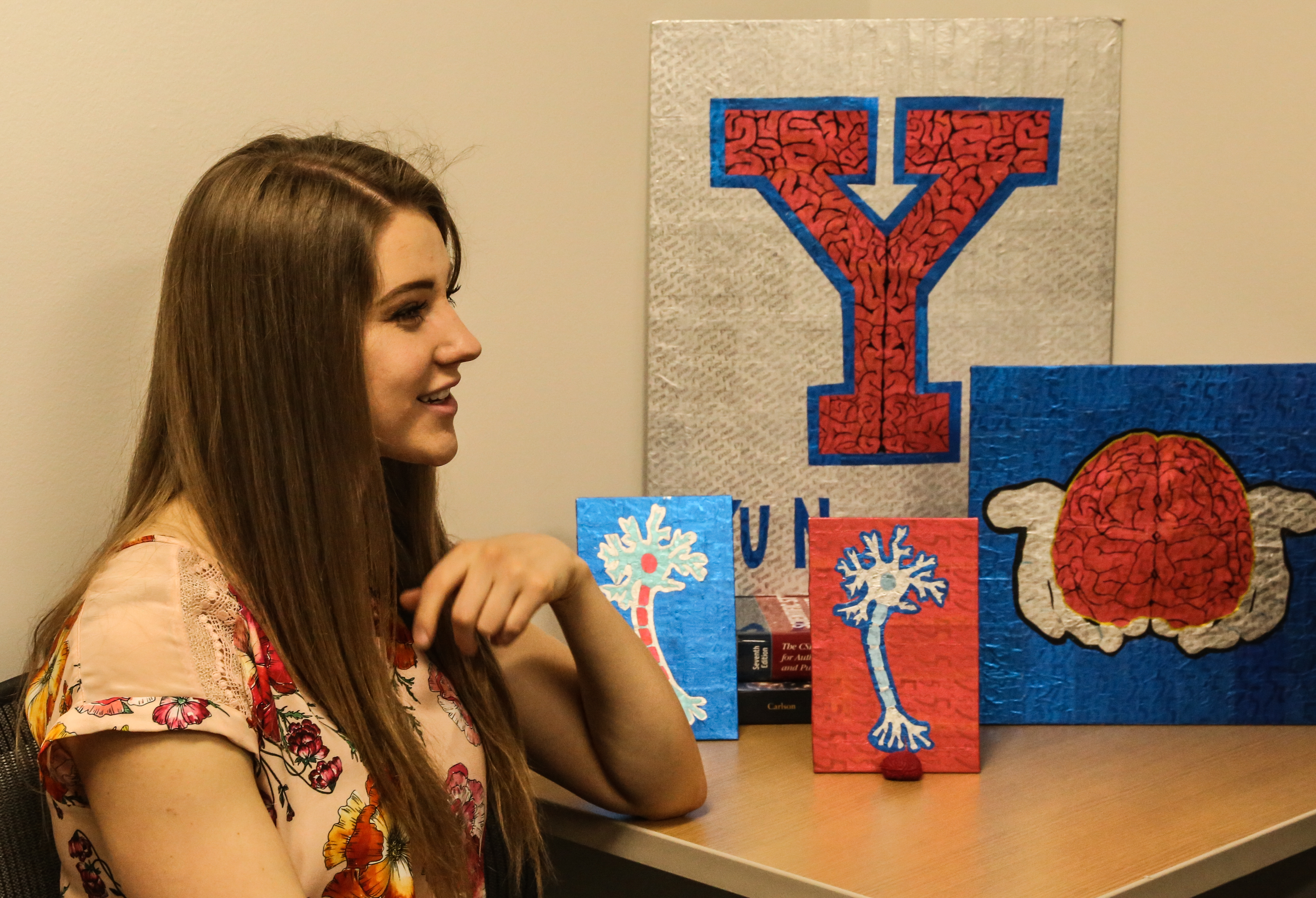
Fellow neuroscience major Maci McCleary said she entered the competition because she is passionate about her studies, and she also has been making gum wrapper art since the fifth grade. McCleary’s design earned her second place in the competition.
Her four-piece design included a few neurons to represent the base of the brain, another one depicting hands holding a brain and a brain shaped like a Y.
“I feel like we have a lot of power when it comes to our brains, and we have a lot of control over how we treat ourselves,” McCleary said. “I think that our brains allow us to create and allow us to be creative.”
Matheson said she hopes the contest allowed the individuals who participated to see the beauty in things they are studying.
“I know from my own experience that when you’re really caught up with your studies and cramming for things and taking organic chemistry, it can be hard to have the moments to appreciate just how beautiful what you’re learning is,” Matheson said. “What I hope it did was give students a chance to pause and appreciate that.”
Hopkins said she hopes to hold the contest annually due to the success this year.
“We have really bright and creative students and you mostly see their creativity coming out through research,” Hopkins said. “For me it was important to showcase how beautiful I think neuroscience is, highlighting the science and the artistic parts of it.”

